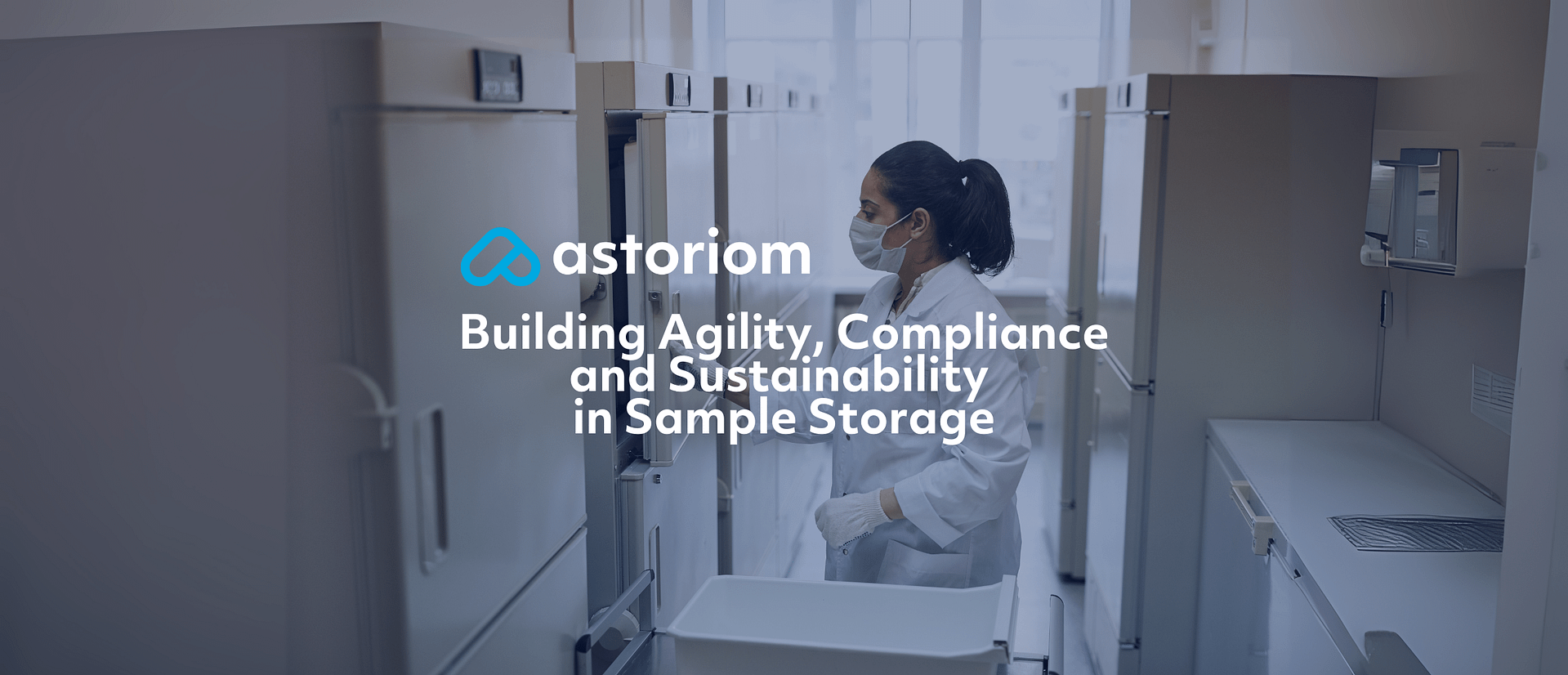This article was originally published on Technology Networks by Anna MacDonald. Read the original version here. Reproduced with permission.
Building Agility, Compliance and Sustainability in Sample Storage
Explore how changing needs are shaping the future of biorepository practices and stability storage solutions.
As biopharmaceuticals become more advanced, the diversity and complexity of R&D samples and their storage requirements have significantly increased. Traditional sample storage models often struggle to meet these demands, prompting a move towards more adaptable and resilient approaches.
Technology Networks recently spoke with Lori A. Ball, CEO of Astoriom, to explore how these changing needs are shaping the future of biorepository practices and stability storage solutions. In this interview, Ball discusses how Astoriom’s Integrated Stability & Sustainability Outsourcing Model addresses traditional storage challenges and enables biopharma companies to respond more nimbly to disruptions. Ball also outlines the key priorities R&D leaders should consider to ensure sample integrity, compliance and operational efficiency.
Anna MacDonald (AM) As the range and complexity of R&D samples continue to grow across the drug development pipeline, how is this shaping the evolution of biorepository practices and stability storage solutions?
Lori A. Ball (LAB): As R&D pipelines become more diverse – ranging from cell and gene therapies to biologics and novel delivery formats – the demands on sample storage aren’t one-dimensional. We’re seeing a shift towards more customizable, modular and risk-mitigated storage solutions that accommodate a broader spectrum of temperature conditions, regulatory requirements and sample sensitivities.
At Astoriom, our biorepository and stability storage infrastructure meets these complexities with scalable platforms, the broadest temperature range in the industry and regulatory compliance – ensuring that every sample, regardless of its nature, is preserved with the highest standard of care and compliance.
AM: What are some of the most significant challenges in traditional sample storage that the Integrated Stability & Sustainability Outsourcing Model is designed to solve?
LAB: Traditional sample storage models often lack flexibility and audit-readiness. Challenges such as inconsistent compliance, fragmented data reporting and risk of sample loss during facility failure, are still prevalent. Our Integrated Stability & Sustainability Outsourcing Model addresses these by offering centralized, validated storage solutions with built-in disaster recovery and real-time monitoring.
Clients benefit from both continuity and confidence – knowing their samples are safeguarded in line with ISO, ICH, cGMP, and CAP standards, as well as FDA, EMA and HPRA regulatory compliance without the overhead of managing in-house storage complexity.
AM: Can you elaborate on how the model supports greater agility for biopharma companies in responding to unplanned disruptions, while maintaining long-term sample stability and data integrity?
LAB: Agility in today’s climate is about resilience and responsiveness. Our model is built to offer both. In the event of unplanned disruptions – whether operational, regulatory or environmental – clients can leverage our distributed, disaster-ready facilities across Europe and the US. Our systems ensure uninterrupted power, continuous environmental control and fully validated backup protocols.
Additionally, our audit-ready inventory intelligence systems provide instant visibility and traceability of samples. This infrastructure empowers biopharma partners to pivot quickly, meet urgent regulatory requests and protect long-term data integrity without disruption to their scientific timelines.
AM: When planning for the storage of samples, what priorities should R&D leaders focus on to ensure reliability and efficiency?
LAB: R&D leaders should prioritize four core pillars: compliance, continuity, customization and control. Compliance ensures alignment with evolving regulations like ICH Q1A/Q1B, CAP and ISO standards. Continuity is about risk mitigation – having validated disaster protection and recovery systems onsite, as well as back-up contracts with disaster recovery service providers in place.
Customization speaks to the need for storage that adapts to specific study types, sample formats and temperature profiles. And finally, control encompasses data visibility and decision-making – R&D teams need systems that deliver accurate, on-demand reporting without compromising security. At Astoriom, we design our services with these exact needs in mind.
AM: Looking ahead, how do you envision the future of R&D sample storage evolving – particularly with the influence of digital tools, regulatory shifts and sustainability goals?
LAB: The future of sample storage is inherently digital, decentralized and decarbonised. Digital tools – like predictive analytics, AI-driven monitoring and automated inventory systems – will become standard for ensuring proactive management and compliance readiness.
Why Astoriom is Sharing This Article
At Astoriom, we understand the strategic importance of agile and compliant sample storage infrastructure. This article aligns with our vision to help R&D organisations safeguard the integrity and sustainability of their samples, no matter where they are in the product lifecycle. We’re pleased to share it here as part of our commitment to advancing best practices across the life sciences sector.




